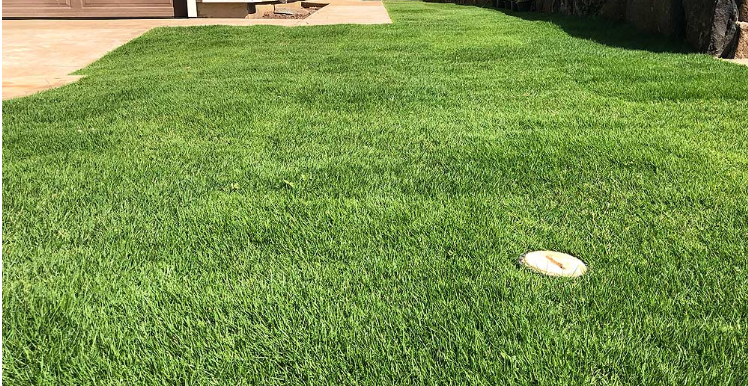Scientists have predicted that the environmental changes that happened over a couple of years have drastically altered the climate. This weather change has decreased the ratio of annual rains but at the same time caused flooding in several areas. Less rainfall has destroyed grass and lawns with Zeon Zoysia installed on them because this extreme weather will wither away the water and make the grass dry.
What are the Signs of a Drought-Stricken Zeon Zoysia?
Homeowners should know the important signs that will help them understand how heat and lack of rain affect grass growth.
- The original color of sod grass ranges from light to dark green. But when drought hits an area, the grass will turn yellow and brown.
- The second sign of drought damage is that foot and mowing impressions last longer. It will take more time to spring back to the normal position.
- The Emerald Zoysia grass blades could roll up or fold because of the lack of water.
- The lawn will start developing brown patches and if the grass doesn’t pull out easily, then it means that the soil needs excess water.
- Another sign of drought-driven lawns is that the grass recovery rate is slower than normal. Your grass might take weeks to heal and grow back to the right length.
- Lower levels of moisture in the soil will result in the development of cracks and gaps in the soil.
- You can insert a screwdriver in the soil and check for moisture level. If the tool is inserted in by force then it means that the grass needs an abundance of water.
Zeon Zoysia Sod Grass Doing Extremely Well in Drought
Although Zeon Zoysia is a drought-resistant sod grass, it doesn’t mean that you can neglect maintenance and care. This is a mistake that they make when dealing with the grass in a city where drought has settled in that they follow the normal rules. But when your lawn has been under a drought attack, then the following extra care should be taken.
Eliminate the Thatch Layer
Sometimes people confuse the thatch layer with the top soil and the reason is that this layer develops on the ground. But homeowners should understand that this layer is created when debris, dead animals, leaves, and animal poop start to gather and gradually starts becoming a part of the soil. This damages the growth of Centipede sod, especially during the drought season. It is important to remove this layer whenever it develops.
Never Neglect the Aeration Process
During the drought season, the water evaporates quicker than on normal days, thus making the ground hard. This won’t allow air to reach the roots, so aerating the soil is important. The aerating process consists of creating holes in the soil so that air reaches the deep layers of the ground.
Be Careful when Mowing the Centipede Sod
The drought season brings less rain and high temperatures that can affect the sod grass’s growth. So, homeowners should keep the grass length one to two inches more than the recommended height. The reason is that this long length will save the grass blades from being burnt by the scorching heat.
Apply an Extended Quantity of Water
Another important suggestion the sod grass experts give is a comprehensive water quantity should be applied. You should look for drought signs including the grass changing color, and if this clue occurs, then you should start watering your lawn with Zeon Zoysia sod. Try to install a smart irrigating system that will ensure equal distribution of water.
Always Keep a Check on the Weather Forecast
It has been observed that sometimes during the drought season, there is an unexpected rain spell. So, it has been recommended by the sod grass suppliers like Atlanta Sod Farms that you should keep checking the weather forecast. The reason is that you might water your lawn and it rains the same day. Excess water will damage the grass.
Be Careful When Applying the Fertilizer
The chemicals in the fertilizers might create a reaction when combined with extreme heat and will burn the grass. So, it has been recommended to avoid fertilizer until it is unavoidable. You can scatter the clippings after mowing which can be a natural fertilizer.
These are some important signs of a drought-stressed Zoen Zoysia and the ways to save the grass from damage.
Here are three questions to help manage your sod grass.
Frequently Asked Questions
What is the best drought-tolerant grass seed?
The best drought-tolerant grasses include Bermuda grass, Zeon Zoysia, St. Augustine grass, Centipede grass, Bahia grass, Buffalo grass, and Tall Fescue sod grass.
Is sod better than planting grass?
The choice of laying sod grass and planting seeds is up to the homeowners. If they can wait for three to four months, then they can select planting seeds. But for an instant lawn sod grass is the best choice.
Will drought-stressed grass recover?
The grass recovery depends on the intensity of the damage. Sometimes the grass might not recover from the damage and reinstallation could be required.
Also read examinnews
